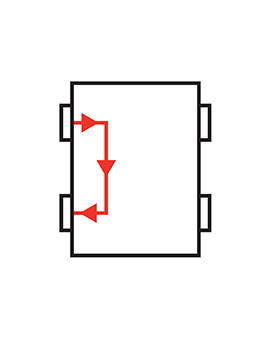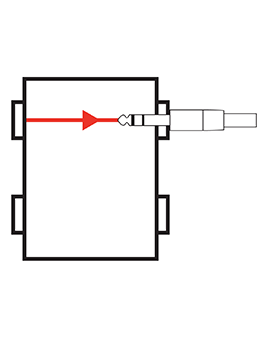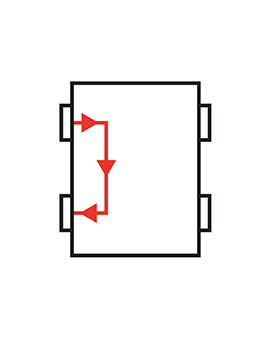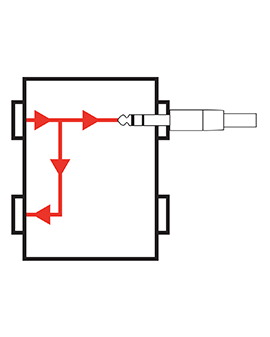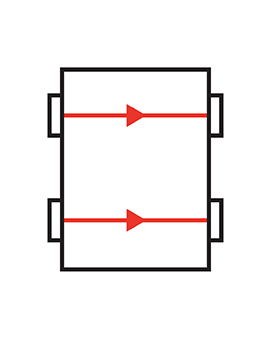Why Quiet Matters (in Cables)
Cables have a pretty thankless job. The best ones work all the time and you never hear about them. And that’s exactly what they should do. Miles Dimitri Baker, guitarist and part of the band Interloper, said it best:
“You can’t have noise. It’s, like, not an option. So if someone asks [which cables to buy] I’m going to say Hosa because that’s what I personally use on all of my gear.”
This month, we were fortunate enough to meet with Miles in his home studio and he fills us in on his creative process and why Hosa cables are the best fit for him.
Miles Dimitri Baker, Artist and Guitarist, Interview
VIDEO TRANSCRIPT
One of my favorite things about music is obviously the emotion it can create. It gives you a feeling, you know you hear a song and it can take you back to a place in your life, like a memory or it can give you a feeling whether it’s like sadness or triumph or any of those types of emotions. Music has the power to do that.
Hey, I’m Miles Dimitri Baker. I’m a musician, I play in the band Interloper and I also teach music. And this is my cat, Sabrina. I like the things I’ve been able to do with it, honestly. You know, I’ve been able to put music out and people enjoy what I do which, I think, for most people – at the end of the day people feeling appreciated, you know, is a basic human need. So I feel really lucky and fulfilled that way.
The creative process for me can be different. It almost starts, sometimes, like a calculated approach. For certain things, you know, do I find this certain chord progression in like its purest form – you know, through position triads or 7th chords. Do I find that, like, appealing? And then it becomes like a manipulation process – of like – how can I make this actually sound cool, in like, an actual musical idea. You know, taking sort’ve like a more like calculated, sort’ve scholastic approach to it and then like really manipulating it. That’s a lot of times my approach for it and then other times, you know, you really get that where you’re hearing something and you’re like, “Oh wow, I need to record, like, right now.” And that’s really exciting, turning that and developing it. Same kind of approach, like, “what’s really going on here?” What do I hear next, if I don’t hear something next, maybe I’ll hear, like, the structure of it. Maybe, what harmonically is going on that, maybe I can use to get to this next section that I have yet to have an idea for.
Every little thing that becomes like an ease abuse type situation. It’s the smoothness in which that workflow is interrupted by saying like, “how do I do this or I need to go get this, or whatever.” You know, I have the ability to run things however I want.
Every single piece of gear I have in here is using Hosa cables (laughs). Literally everything. Every single piece – from the monitors to all of my rack stuff to any sort of connection running to like, this cab. Speaker cables, power cables, it’s all Hosa. You know, they’re durable, they sound good, they’re quiet – that’s another thing that’s worth mentioning with cables. Some cables are noisy. If you’re trying to track like a DI guitar, or you know, re-amp something, you can’t have noise. Or if you’re running cabling through FX things like a reverb pedal or delay pedal, you know, your tuner to your guitar. You can’t have noise, you know? It’s like not an option so it’s nice having dependable things. It’s like, I literally use them for everything – so if someone asks I’m going to say Hosa because that’s what I personally use on all of my gear.
Popular Hosa Cables and Accessories for Guitarists (H2)
– Hosa Edge Guitar Cable
Every electric guitarist needs a guitar cable. Our Edge series are designed to provide a lifetime of outstanding performance.
– Goby Labs Guitar Care Kit
Inevitably when you use music and audio equipment, you’re going to get some wear and grime build-up and potentially expose yourself to unwanted germs. Our Goby Labs Guitar Care Kit can help with that.
– Pro Headphone Extension Cable
Our Pro Headphone Extension Cables are designed to extend the reach of hard-wired headphones. These are especially useful when playing your instrument away from your console or DAW.

